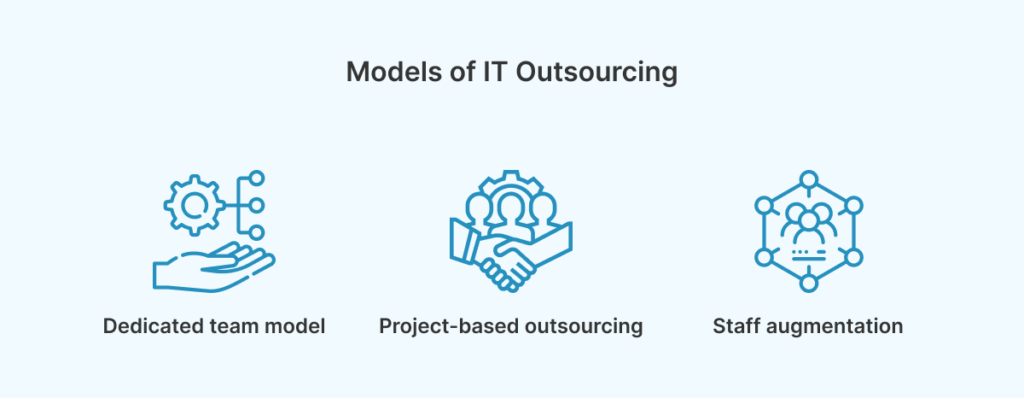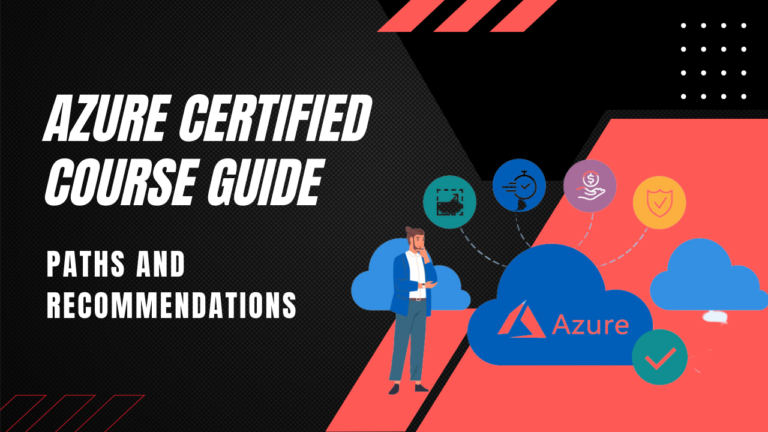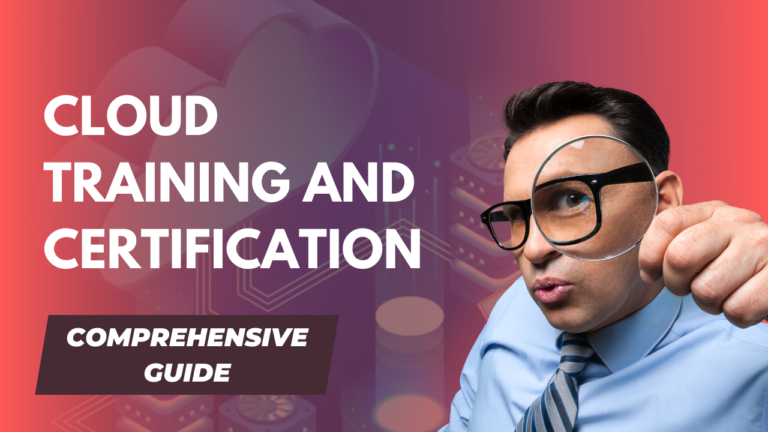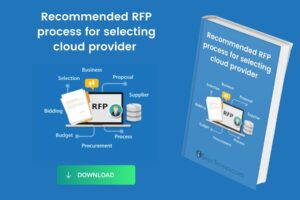In today’s fast-paced digital landscape, businesses of all sizes are recognizing the importance of leveraging IT capabilities to stay competitive. However, managing and maintaining an in-house IT department can be costly and resource-intensive. This is where IT outsourcing comes into play.
By outsourcing IT services, businesses can access specialized expertise, reduce costs, and focus on core business activities. However, to reap the maximum benefits, it’s crucial to develop a well-defined IT outsourcing strategy. In this guide, we will explore the key steps involved in creating an effective strategy that aligns with your business goals.
Understanding IT Outsourcing
Before diving into the strategy development process, it’s essential to understand what IT outsourcing entails. IT outsourcing refers to the practice of contracting specific IT functions or services to external service providers. The two main types of IT outsourcing are:
- Application Outsourcing: Involves the development, maintenance, and support of software applications.
- Infrastructure Outsourcing: Encompasses the management and maintenance of hardware, networks, and servers.
Businesses often choose to outsource IT services for various reasons, such as accessing specialized skills, reducing operational costs, improving efficiency, and enhancing scalability.

Assessing Your IT Needs
To develop an effective IT outsourcing strategy, start by assessing your organization’s IT needs. Evaluate your current IT infrastructure, systems, and processes to identify areas where outsourcing can bring the most significant benefits. It’s essential to differentiate between core and non-core IT functions:
- Core IT Functions: These are activities directly related to your organization’s unique value proposition and should typically be kept in-house.
- Non-Core IT Functions: These are activities that support core functions but are not directly tied to your organization’s differentiation. These are good candidates for outsourcing.
By defining the scope of outsourcing, you can focus on the areas that will have the most impact on your business’s efficiency and effectiveness.
Selecting the Right Outsourcing Partner
Choosing the right outsourcing partner is a critical step in your strategy development process. Consider the following factors when evaluating potential vendors:
- Expertise and Experience: Assess the vendor’s expertise in your industry and their track record of delivering successful projects.
- Reputation and Reliability: Look for references, reviews, and testimonials to ensure the vendor has a solid reputation and can be relied upon.
- Cultural Fit: Evaluate how well the vendor aligns with your organization’s culture, values, and work ethic.
- Scalability: Determine if the vendor has the capacity to scale their services as your business grows.
- Communication and Collaboration: Assess the vendor’s communication channels, responsiveness, and willingness to collaborate.
Conduct a thorough vendor selection process, including issuing requests for proposals (RFPs) and conducting interviews or site visits to ensure a good fit.

Establishing Clear Objectives and Expectations
To ensure a successful outsourcing engagement, it’s crucial to establish clear objectives and expectations from the outset. Consider the following steps:
- Define Your Goals: Clearly articulate what you aim to achieve through outsourcing. Examples include reducing costs, improving service quality, or accelerating product development.
- Set Realistic Expectations: Ensure your expectations align with industry standards and the capabilities of the outsourcing partner.
- Create a Service Level Agreement (SLA): Develop a detailed SLA that outlines the scope of work, performance metrics, deliverables, and timelines.
By setting clear objectives and expectations, you create a solid foundation for a productive and mutually beneficial partnership.
Building Effective Communication Channels
Effective communication is vital for successful IT outsourcing. Establishing clear and efficient communication channels ensures that both your organization and the outsourcing partner are aligned and working towards common goals. Consider the following strategies:
- Regular Communication Protocols: Define the frequency and modes of communication between your organization and the outsourcing team. Regular meetings, reports, and updates help maintain transparency and foster collaboration.
- Collaboration Tools: Utilize collaborative platforms, project management tools, and shared document repositories to facilitate seamless communication and information sharing.
- Managing Cultural and Language Differences: Recognize and address potential cultural and language barriers. Provide language support if necessary and promote cultural understanding to foster effective collaboration.
- Designated Points of Contact: Appoint dedicated individuals on both sides to serve as the main points of contact. This streamlines communication and minimizes confusion.
By prioritizing effective communication, you can ensure that information flows smoothly and that both parties are on the same page throughout the outsourcing engagement.
Ensuring Data Security and Confidentiality
When outsourcing IT services, data security and confidentiality are of utmost importance. Safeguarding sensitive information and protecting intellectual property should be key priorities. Consider the following measures:
- Robust Data Security Measures: Implement comprehensive security protocols, including encryption, access controls, and regular security audits.
- Vendor Security Assessments: Conduct thorough assessments of the vendor’s security practices, certifications, and compliance with industry standards (e.g., ISO 27001).
- Intellectual Property Rights: Establish clear guidelines regarding the ownership and protection of intellectual property rights in the outsourcing agreement.
By prioritizing data security and confidentiality, you can minimize the risk of data breaches and ensure the protection of your organization’s valuable assets.

Managing Risks and Mitigating Challenges
Outsourcing IT services involves inherent risks and challenges. To mitigate potential issues, it’s important to proactively manage risks and have contingency plans in place. Consider the following strategies:
- Identify Potential Risks: Conduct a thorough risk assessment to identify potential risks associated with outsourcing, such as service disruptions, vendor dependency, or data breaches.
- Risk Management Strategies: Develop strategies to minimize and mitigate identified risks. This may include diversifying vendors, implementing backup systems, or conducting regular audits.
- Addressing Challenges: Anticipate and address potential challenges, such as resistance to change within the organization or cultural clashes between teams. Develop change management plans and promote open communication to overcome these hurdles.
By proactively managing risks and challenges, you can ensure a smoother outsourcing process and minimize disruptions to your business operations.
Transitioning to the Outsourcing Model
Transitioning to the outsourcing model requires careful planning and effective change management. To ensure a smooth transition, consider the following steps:
- Planning the Transition Phase: Develop a detailed transition plan that outlines the timeline, milestones, and key activities during the transition process.
- Knowledge Transfer and Training: Facilitate the transfer of knowledge from your in-house team to the outsourcing team. Provide training sessions and documentation to ensure a seamless handover of responsibilities.
- Overcoming Resistance to Change: Address any resistance or concerns within your organization by providing clear communication, offering training and support, and emphasizing the benefits of outsourcing.
By effectively managing the transition, you can minimize disruption to your business operations and ensure a successful outsourcing implementation.
Monitoring Performance and Quality Assurance
To ensure that the outsourcing engagement meets your expectations and delivers the desired results, it’s important to monitor performance and maintain quality assurance. Consider the following strategies:
- Implement Performance Metrics and KPIs: Define key performance indicators (KPIs) and establish a system to measure and evaluate the performance of the outsourcing partner. This can include metrics such as response time, resolution time, and customer satisfaction ratings.
- Regular Evaluation: Conduct periodic evaluations of the outsourcing partner’s performance against the defined KPIs. Provide feedback and collaborate on improvement plans if necessary.
- Adherence to Quality Standards: Ensure that the outsourcing partner adheres to your organization’s quality standards and industry best practices. Conduct audits and quality assessments to maintain the desired level of service.
By monitoring performance and maintaining quality assurance, you can address any issues promptly and ensure that the outsourcing engagement remains aligned with your business objectives.
Adapting to Evolving Business Needs
Businesses operate in a dynamic environment, and as your organization grows and evolves, your IT requirements may change. It’s important to ensure that your outsourcing strategy remains adaptable to these evolving needs. Consider the following:
- Scaling the Outsourcing Model: Evaluate the scalability of your outsourcing arrangement to accommodate changes in the volume and complexity of IT services required. Discuss scalability options with your outsourcing partner.
- Flexibility in the Outsourcing Agreement: Build flexibility into the outsourcing agreement to allow for modifications or additions to the scope of work as needed. This can include provisions for adjusting service levels or expanding the engagement.
- Managing Changing Requirements: Maintain open lines of communication with the outsourcing partner to communicate any changing requirements or technological advancements. Collaborate on adapting the outsourcing strategy accordingly.
By adapting to evolving business needs, you can ensure that the outsourcing strategy continues to support your organization’s growth and objectives effectively.
Evaluating the Cost Factors
Cost considerations play a significant role in IT outsourcing decisions. While outsourcing can offer cost savings, it’s essential to evaluate the overall financial impact carefully. Consider the following factors:
- Cost-Saving Opportunities: Analyze potential cost-saving opportunities that outsourcing can bring, such as reduced labor costs, infrastructure savings, or access to specialized expertise.
- Total Cost of Ownership (TCO): Calculate the total cost of ownership, which includes not only the vendor’s fees but also additional expenses such as transition costs, ongoing management, and any potential risks or hidden costs.
- Comparing In-House vs. Outsourced Costs: Conduct a thorough analysis comparing the costs of in-house IT operations with the costs of outsourcing. Consider both short-term and long-term financial implications.
By conducting a comprehensive cost analysis, you can make informed decisions about whether outsourcing aligns with your organization’s financial objectives.
Establishing Long-Term Partnerships
Building long-term partnerships with outsourcing vendors can provide numerous benefits, including continuity, improved collaboration, and access to specialized knowledge. Consider the following strategies:
- Nurturing a Mutually Beneficial Relationship: Foster open communication, trust, and transparency to build a strong partnership with the outsourcing vendor. Treat the vendor as an extension of your team rather than just a service provider.
- Extending the Partnership: Explore opportunities to extend the partnership beyond the initial project. This can include additional projects, support for future initiatives, or strategic collaborations.
- Leveraging the Outsourcing Partner’s Expertise: Tap into the outsourcing partner’s expertise and industry knowledge. Seek their input and guidance on IT strategies, emerging technologies, and best practices.
By cultivating long-term partnerships, you can capitalize on the vendor’s experience.
Establishing Long-Term Partnerships
Building long-term partnerships with outsourcing vendors can provide numerous benefits, including continuity, improved collaboration, and access to specialized knowledge. Consider the following strategies:
- Nurturing a Mutually Beneficial Relationship: Foster open communication, trust, and transparency to build a strong partnership with the outsourcing vendor. Treat the vendor as an extension of your team rather than just a service provider.
- Extending the Partnership: Explore opportunities to extend the partnership beyond the initial project. This can include additional projects, support for future initiatives, or strategic collaborations.
- Leveraging the Outsourcing Partner’s Expertise: Tap into the outsourcing partner’s expertise and industry knowledge. Seek their input and guidance on IT strategies, emerging technologies, and best practices.
By cultivating long-term partnerships, you can capitalize on the vendor’s experience, foster collaboration, and create a mutually beneficial relationship that drives continuous improvement and success.
Case Studies: Successful IT Outsourcing Strategies
Real-world case studies can provide valuable insights and inspiration for developing your own IT outsourcing strategy. Explore successful examples of organizations that have benefited from outsourcing. Highlight key factors that contributed to their success, such as:
- Clear Objective Alignment: Showcase how these organizations effectively aligned their outsourcing strategy with their business objectives.
- Strong Vendor Relationships: Highlight the importance of selecting the right outsourcing partner and nurturing a collaborative and trusting relationship.
- Effective Communication and Project Management: Showcase how successful organizations maintained effective communication channels and implemented robust project management practices.
- Measurable Results: Demonstrate the tangible benefits and results achieved through outsourcing, such as cost savings, improved efficiency, or accelerated time to market.
By studying successful case studies, you can gain valuable insights and apply relevant strategies to your own outsourcing strategy.
Best Practices for IT Outsourcing
To further enhance the effectiveness of your IT outsourcing strategy, consider the following best practices:
- Thorough Planning and Due Diligence: Invest time and effort in the planning and vendor selection process to set a strong foundation for success.
- Strong Contractual Agreements: Develop clear and comprehensive contracts and SLAs that outline expectations, deliverables, and performance metrics.
- Continuous Communication and Collaboration: Maintain ongoing and transparent communication with the outsourcing partner to ensure alignment and address any issues promptly.
- Regular Performance Reviews: Conduct periodic evaluations of the outsourcing partner’s performance to ensure accountability and drive continuous improvement.
- Stay Agile and Flexible: Embrace an agile mindset and be open to adapting your outsourcing strategy as needed to meet changing business requirements.
By following these best practices, you can optimize your outsourcing efforts and maximize the benefits for your organization.
Conclusion
Developing an effective IT outsourcing strategy is a critical undertaking for businesses seeking to optimize their IT capabilities while reducing costs. By understanding the fundamentals of IT outsourcing, assessing your organization’s needs, selecting the right outsourcing partner, and establishing clear objectives, you can lay the foundation for a successful outsourcing engagement. Effective communication, data security measures, risk management, and ongoing performance monitoring are vital for maintaining a productive outsourcing partnership.
Additionally, adapting to evolving business needs, evaluating cost factors, and nurturing long-term partnerships contribute to sustained success.
By following the best practices outlined in this guide and learning from real-world case studies, you can develop a robust IT outsourcing strategy that aligns with your business goals and maximizes the benefits of outsourcing.





